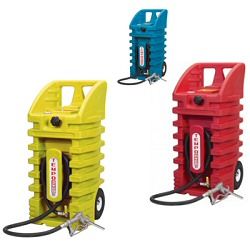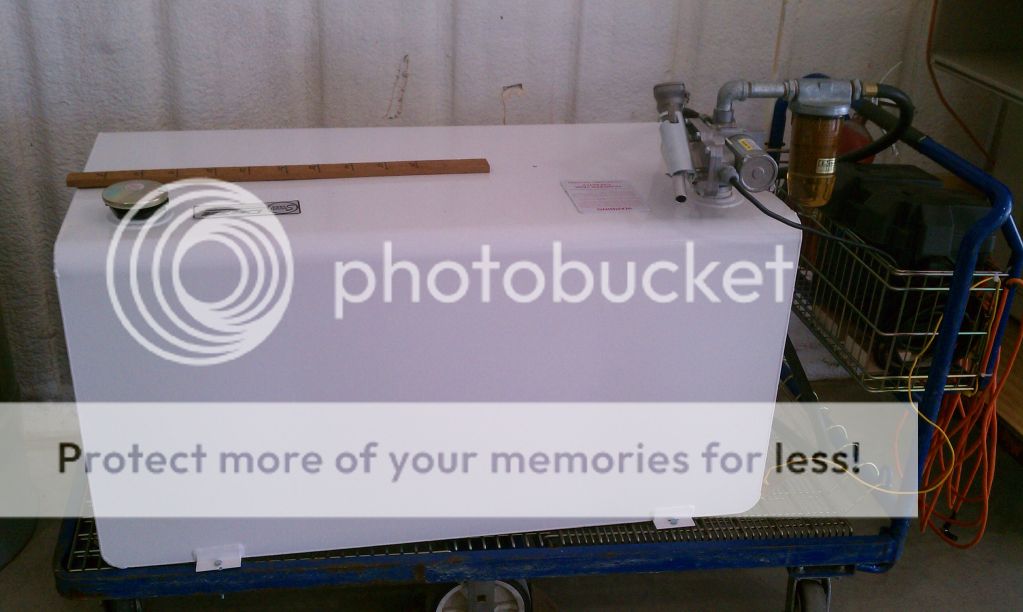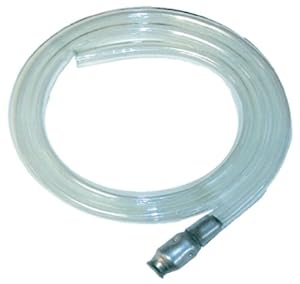I use the Bykas Fueling Caddy mentioned above. I bought it from Steve Rush when he sold his RV-12 and had to go from MoGas to AvGas. It works very well.
It's 30 gal capacity but I usually don't fill it beyond 20 gals. It has a nice service station nozzle that makes fueling the airplane very easy. It works by pressuring the tank. Some people pressurize with shop air - I use CO2, which is what the design calls for. I like that the CO2 acts as an inerting medium in the ullage, increasing its safety and reducing the risk of static electricity from a stoichiometric mixture in the ullage.
The tank has a standard Schrader tire inflation fitting, and a pressure relief - which is set at about 2.5-3.0 psi. That pressure allows a nice volume of fuel to move to the nozzle. After finished fueling, I drain the hose back into the tank, close the hose SOV, and then re-pressurize the ullage with CO2, improving the safety of the tank while it is not being used.
When fueling, I electrically bond the airplane, the fueling nozzle, and the drum to a common ground (earth.)
The downside of this system, is it requires a double transfer - I fuel my 5 gal jerry cans at the filling station, and then must transfer the fuel to the drum. When I do that, I use a syphon, and a long neck metal funnel, which is also grounded to the drum and external ground.
Every airport that I am aware of has this 5 gal storage restriction - and for good reason. I suppose. The problem is that it is problematic for people, like most of us, that want (need) to use MoGas which is not sold at most airports. The airports I am involved with "prohibit" more than one 5 gal container - filled or empty - on the premises. So, how do you fuel your airplane? Besides the LS Rotax crowd, there are many T/C'd airplanes with MoGas STCs, and they have much bigger fuel tanks. It's difficult enough to fuel a small capacity LS, much less an airplane with 50 or 80 gal tankage, using 5 gal cans. Especially just one! You'd have a pickup bed full of 5 gal cans.
I also believe all this transferring is dangerous - static electricity is a very real danger in moving fuel around - and the danger from the multiple cans and transfers probably outweighs the dangers of combustion while sitting in a hangar. Plus, what do you do with all these fuel cans? They are likely prohibited because they are thought to be a fire or explosion hazard in the event of a fire from another source. Do you take them home? Most home-owner policies likewise restrict fuel containers in your garage. If you have a fire and your house burns down, losing insurance coverage because you had those gas cans stored in your garage - because you couldn't store them in the hangar - would be a lot more costly than losing your airplane.
Because of these problems, the airports I am familiar with that have all these fuel container prohibitions also have numerous violations that are on-going every day. The airport authorities write these rules into the regulations to CYA, to please the Fire Marshall, the insurance companies - and then look the other way.
One advantage - maybe - of the drum - is it will allow easier mixing and blending of fuels. I know, Jabiru calls mixed fuels "Shandies" and calls the practice unsafe. Well, Rotax doesn't, nor do many other engine companies - and besides, I don't have a Jabiru.
I'm going to try and reduce the ethanol content of the fuel I use - due to Vans SB -and other considerations. I can only get 87 AKI non-ethanol, so I am planning to blend it with 92 AKI MoGas with ethanol and 100LL in a ratio that will give me between 91 and 92 AKI fuel with about 2.5% ethanol content.
Mixing the fuel in the drum will be a lot easier and more precise than trying to mix it in the airplane.
We'll see what happens.
Bob Bogash
N737G









